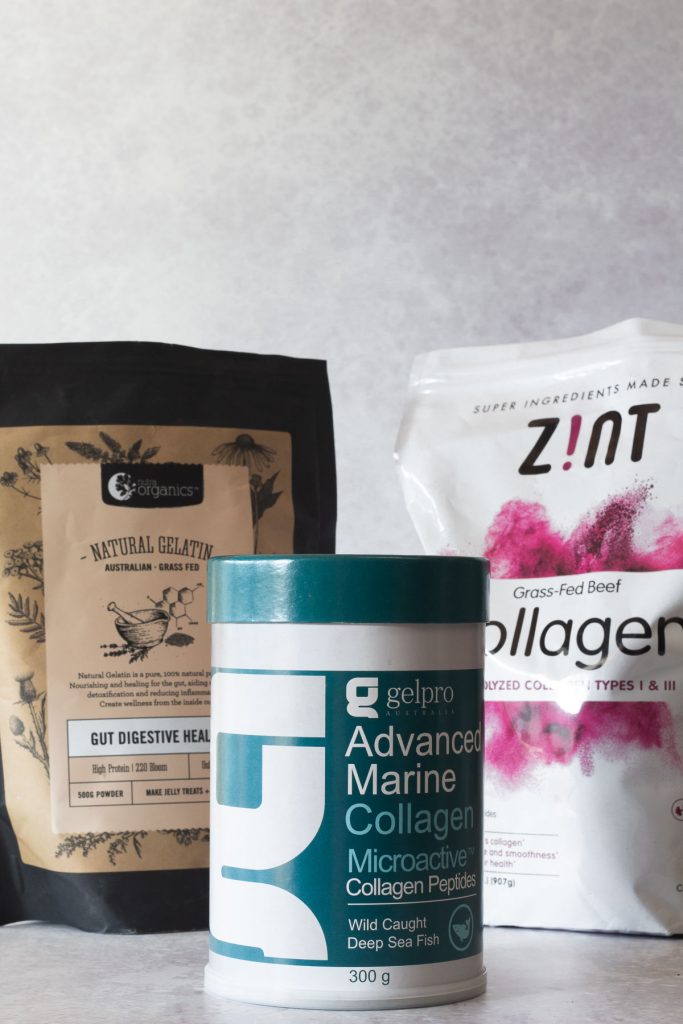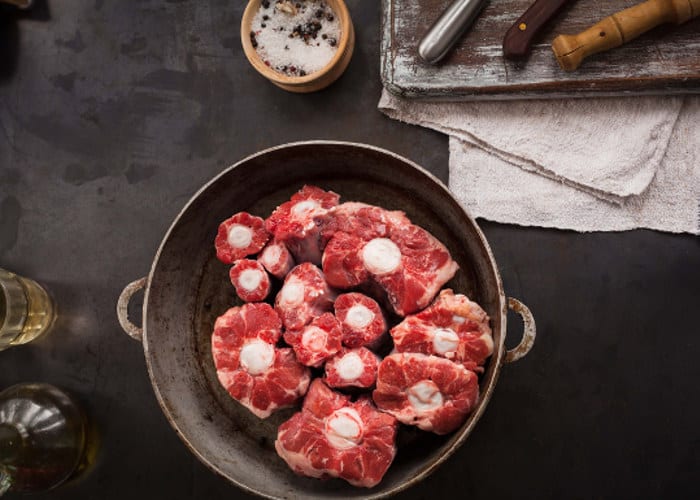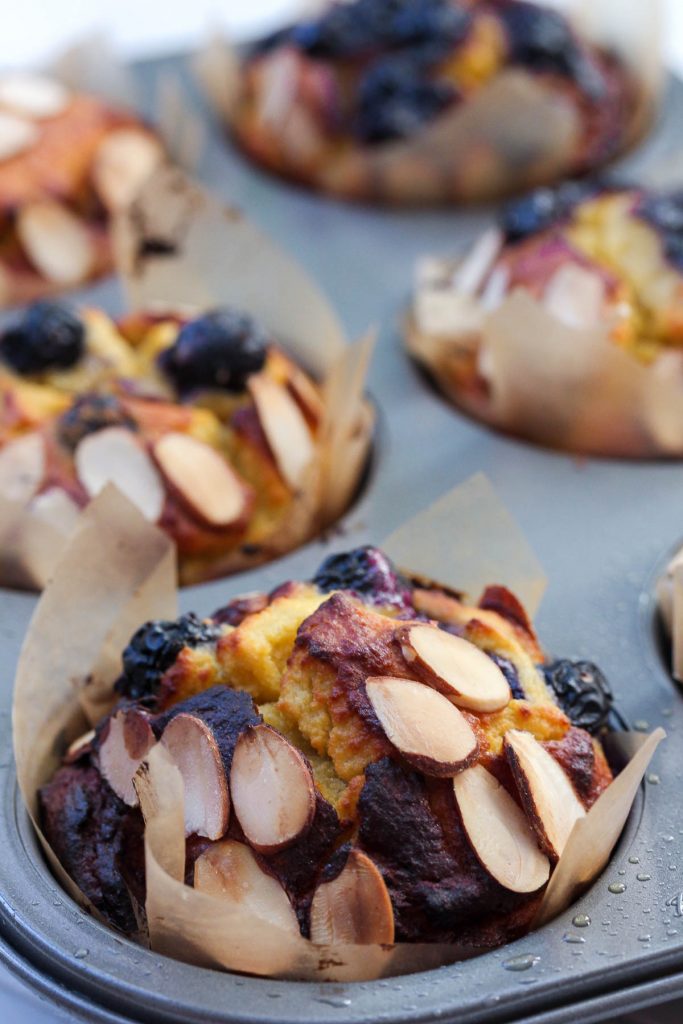Collagen and gelatin are genuine dietary game changers that can bring significant health benefits not available elsewhere. In this post, I'm going to explain what collagen and gelatin are, the health benefits, easy ways to add them consistently to your diet and also important things to know.

Jump to:
- Introduction
- What are gelatin and collagen?
- Health benefits of gelatin and collagen
- How this information applies to you
- Why an imbalance of amino acids is a problem
- What this means for your diet
- What about marine collagen?
- How to use gelatin and collagen
- How to use powdered gelatin
- How to use collagen
- Important things to know about collagen and gelatin
- Potential pitfalls?
- FAQs about collagen and gelatin
- Do you use collagen or gelatin regularly?
- Work with me
Introduction
First a little back story...for years I had painful bursitis in my upper arms and what felt like really weak tendons. It was very hard for me to lift my arms above my head without pain. The initial injury was caused by lifting heavy boxes during a house move and I just never recovered. I was constantly getting re-injured by lifting even semi-heavy things.
Cut to a few years ago and I got involved in the Paleo diet pretty heavily. I don’t eat strict Paleo anymore because I personally don’t need to, though it did really help me get on top of some autoimmune issues. I live by the idea that the least restrictive diet possible that’s also health-promoting is really important for sustainability and mental health. And I found that by eating a certain way, I could avoid these painful and annoying injuries. A Paleo style diet, or something similar, is anti-inflammatory and nutrient dense - perfect for an inflammatory condition like bursitis.
So, a lot of my colleagues and clients have probably guessed that I’m referring to gelatin and also collagen. The two are quite similar, collagen is just broken down a bit more and is probably more of a flexible ingredient than gelatin.
I know the term “game changer" is overused but that’s exactly what it these have been for me. Using these products regularly and making an easy chicken bone broth has made a noticeable difference to my health, to the point that I forget I have this long term weakness in my arms. The results have been pretty consistent over the years - when I take gelatin or collagen regularly, the pain vanishes and my range of movement is noticeably better. When I stop, the pain and movement limitations return. That cycle has happened quite a few times over time, so I now make an effort to take them regularly.
What are gelatin and collagen?
Gelatin is a product made from the collagen sourced from animals. Just as animals have collagen, so too do humans. It's the most abundant protein in the body and acts like glue or scaffolding to support our structure. As we age, collagen is broken down faster than we can replace it, so it's a good idea to support its production in our body. Nearly 28 types of collagen have been identified, but 80 – 90 percent of the collagen in the body consists of types I, II, and III. Collagen type I is the most common in skin, bone, teeth, tendon, ligaments, vascular ligature, and organs. Collagen type II is present in the cartilage. For collagen type III, the skin, muscle, and blood vessels are the most common sources of this protein.
In animals - usually pigs and cows - the collagen is typically found in the "leftover" parts of the animal not sold as meat, although there are some cuts of meat sold at the butcher that are rich in collagen such as oxtail, pigs trotters and beef shanks/osso bucco. Gelatin is most well known as an ingredient in jelly/jello and also marshmallows.
Collagen hydrolysate or collagen peptides are a broken down - or hydrolysed - form of gelatin that doesn't gel and is more neutral in flavour. This comes in a bovine (beef) option and also marine.
Another supplemental form of collagen is undenatured Type II collagen which has very specific benefits for joint health - so it's helpful for osteoarthritis and also rheumatoid arthritis which is an autoimmune type of arthritis. The two types of collagen supplement are dosed differently.
Collagen and gelatin are a great source of the amino acids proline, glycine, glutamine and arginine, but do not contain the amino acid tryptophan which is a precursor to serotonin and melatonin. Bovine collagen contains 14% more proline and 41% more hydroxyproline than marine collagen. These two amino acids make up about 25% of collagen, being the most abundant amino acids after glycine. Hydroxyproline in particular is important as a crucial component of collagen and the protein elastin.

Health benefits of gelatin and collagen
The amino acids in collagen and gelatin are essential for many aspects of health such as joints, tendons, ligaments, gut, skin, nails, bones, hair and our brain health. We also need glycine for good nervous system/mental health and sleep.
Here is a summary of the science showing the benefits of using collagen in particular:
Benefits for osteoarthritis - Collagen hydrolysate for the treatment of osteoarthritis and other joint disorders: a review of the literature
Joint pain - Effect of collagen hydrolysate in articular pain: a 6-month randomized, double-blind, placebo controlled study
Skin health - Oral supplementation of specific collagen peptides has beneficial effects on human skin physiology
Further, a 2020 systematic review - the most rigorous assessment of the research to date - found that taking collagen peptides consistently led to improvements in skin luminosity, hydration, elasticity and wrinkle number.
Improvement in hypertension and metabolic markers - using marine collagen in Type 2 diabetics with primary hypertension.
Musculoskeletal injuries - research indicates a role for hydrolysed collagen for both injury prevention and injury treatment.
How this information applies to you
Amino acids are the building blocks of proteins. So, the protein foods you eat contain amino acids - every type of protein has a unique amino acid sequence. One of the big gaps in most people’s diets is the specific amino acids found in gelatin and collagen.
Most omnivores these days - meaning people that eat both animal and plant foods - are not eating the whole animal - or, nose to tail. Because we don’t have to hunt for our food anymore, we can afford to be choosy, or so we think. So, most omnivores are eating only the eggs and muscle meats - for example, chicken breast, thighs, mince, steak, roasts. When we forgo the other parts of the animal, we miss out on incredibly important nutrients.
Just as liver is a health food, so are the parts of the animal that are gelatin or collagen-rich. When we eat too much muscle meat, our amino acid balance is way out of whack - we end up with too much methionine and not enough glycine. Meat and eggs are rich in methionine; gelatinous foods are rich in glycine, glutamine, and proline. All of these amino acids have really important roles in our health.
Why an imbalance of amino acids is a problem
A diet high in methionine - which is typical for standard diets and even "healthy" diets - requires a high amount of certain vitamins - eg. B vitamins - to offset the production of homocysteine, a risk factor for cardiovascular disease and a marker now associated with psychiatric health. Eating too much methionine also drains our glycine levels, so eating excess methionine from muscle meats without balancing glycine is a double whammy because you’re not eating much glycine AND your levels are also being drained.
Our connective tissues really suffer without the building blocks of the special amino acids found in gelatin and collagen. Our joints, tendons, ligaments, gut, skin, nails, bones, hair and our brain all benefit from adequate amounts of gelatin or collagen, because they provide these special amino acids in decent amounts. So, you can see many of our tissues require these amino acids and most people are probably not getting enough. We also need glycine for good nervous system/mental health and sleep.
What this means for your diet
In short - balance your muscle meats and eggs with either gelatinous cuts of meat or add in gelatin and collagen powders. You can do a combination of both, which is what I find is easiest...and tastiest!
You can either take in gelatin or collagen in a powder form - usually from beef or pork - OR you can consistently eat plenty of gelatinous foods such as beef shank or osso bucco, oxtail, pig’s trotters, homemade chicken stock, tendons which are traditionally eaten in Vietnamese soup for example.
FYI - for those who eat seafood but not meat - collagen is also available in a marine form, which is more expensive but may be absorbed better than the beef variety. However, bovine collagen contains 14% more proline and 41% more hydroxyproline than marine collagen.
I personally like to combine getting my gelatin from food - along with taking supplemental collagen and gelatin powders - because I try to get as much as possible and it is really easy. I make my own easy chicken stock using the bones/joints from a BBQ/rotisserie chicken from the supermarket and I also add gelatin and collagen to whatever I can - see ideas below. Making stock in this easy way also provides additional dietary goodies that are not found in the powders.
What about marine collagen?
Marine collagen is usually made from the scales, bones and skin of marine life including fish, jellyfish and sponges. Most marine collagen contains Types I and III just like bovine collagen and is a good choice for those who do not eat bovine products. It is believed to be better absorbed than other forms of collagen due to a lower molecular weight. Some brands of marine collagen may also contain Type II which is helpful for joints/cartilage.
How to use gelatin and collagen
Gelatin and collagen are slightly different. Gelatin is the whole protein and collagen has been further broken down in to peptides. This means you use them slightly differently. Either way, both of them are super easy to incorporate in to your diet.
First up - gelatin. It only dissolves in hot water and it gels after cooling - for example jelly or jello. It's less broken down than collagen so it can still gel.
How to use powdered gelatin
- gummy treats or jelly (jello)
- homemade marshmallows
- savoury sauces
- soups
- hot chocolate
How to add: If I’m making a dish with a sauce, I add the sauce to my blender while it’s still warm - not hot - and add around ½ cup of gelatin. I do the same for soup. If I’m adding gelatin to a hot chocolate, I add my prepared hot chocolate to my blender and then add a scoop of gelatin through the top while it’s blending. A stick/immersion blender also works well for these. If you add it to your soup or sauce, it will gel when you chill the leftovers, but will liquify again when you re-heat.
Using gelatin in hot chocolate, soups and sauces gives the most amazing creamy rich mouthfeel/texture. It’s unbelievably good. So that’s how I use gelatin. I don't really use it to make gummy treats, but I might do that again at some stage!
How to use collagen
Because collagen has been broken down further, it doesn’t gel. But it does dissolve in either hot OR cold water. It has a really mild flavour, so it’s easy to add to lots of things. It can also be used in baking.
Here's how I use collagen in powder form:
- I add it to smoothies
- Mix it in to hot tea
- For baking - I have a recipe on my website for high protein muffins, with the perfect balance of methionine from eggs along with the amino acids in the collagen
- I also have a delicious recipe for Banana, Date and Pecan Collagen Cookies
- I have a bread recipe from my first book Bread or Dead that uses collagen for structure and extra protein
- I’ve also added it to brownies

Note: If you want to use collagen in baking, I recommend using a recipe that someone else has already developed rather than experimenting. I noticed from my own experiments that for recipes like bread and muffins which contains eggs and/or water, the collagen can influence the ability of the flour to be correctly hydrated. So, definitely use a recipe someone has already tested - such as the examples above - if you want to use collagen in baking. It should be ok to add it to granola bar or Lara bar recipes though as they don’t really have any water.
I try to get at least 2 serves of either gelatin or collagen every day.
How I make a super easy chicken stock
I like to buy a BBQ/rotisserie chicken once a week or fortnight and keep the bones/joints and frame. Once I've finished the chicken, I put the bones/joints and frames in my pressure cooker for 1-2 hours with 1 litre of water to make a lovely stock or broth. When it cools, it jiggles like jelly/jello so that's how you know it's gelatinous. I keep it simple, so I don't even add carrots or onions to the stock. That way, the flavour is neutral for whatever I use it for. I love to make my Black Rice Congee using this chicken stock.
Important things to know about collagen and gelatin
- Undenatured type 2 collagen is usually dosed at 40mg per day and may be best taken on an empty stomach before breakfast
- Some other nutrients that are important for collagen production in the body include Vitamin C and copper
- if you track your protein intake, gelatin and collagen don’t really count towards the total because they aren’t complete proteins like the protein in meat and eggs for example. So, it’s really a complement to the total proteins in your diet and shouldn't displace those.
- it does help to stimulate bone growth and helps with joints
- there's currently not enough evidence to definitively conclude that collagen or gelatin supplements help to stimulate muscle growth, although a small study of 25 men showed an increase in body mass, fat free mass and strength in the men taking collagen and performing resistance exercise compared to those performing the exercise alone. Collagen has also been shown to increase muscle mass and strength in older men with sarcopenia.
- may help sleep due to glycine content
- some people tolerate gelatin better than they tolerate collagen, in terms of digestive symptoms
- if you don't consume pork, ensure to get a bovine/beef source
- if you eat fish/seafood but not meat, then marine collagen is perfect for you. It has been said that marine collagen is better absorbed than bovine, but I couldn't find hard research to confirm this.
- an anti-inflammatoy, nutrient-dense diet and lifestyle enhancements are essential to getting results rather than just using gelatin or collagen as magic bullets
Potential pitfalls?
As previously covered, it's important to balance your amino acids correctly and there are other potential issues to be mindful of.
- gelatin and collagen deliver a high amount of arginine, affecting lysine balance and may therefore be an issue for those with herpes viruses. Some people will need to supplement lysine or increase their dose if already taking lysine. Reducing high arginine foods may also be helpful - foods such as chocolate, soy, chickpeas, turkey breast and beef.
- If you have any issues with oxalates, you need to be careful with your intake of gelatin and collagen due to the hydroxyproline and glycine content. So you may need to address your oxalate intolerance first before experimenting with collagen or gelatin.
- The average diet contains between 5 and 10 grams of glutamine per day - a 12g serve of collagen contains 170mg so it's highly unlikely that any negative effects of glutamine conversion to glutamate (eg. anxiety) would be caused by collagen or gelatin.
- Histidine can convert to the neurotransmitter histamine. A 12g serve of collagen contains 60mg of histidine whereas 100g of tofu contains 431mg and a pork chop contains 2225mg. So, it's unlikely the histidine content in 1-2 serves of collagen or gelatin a day is going to contribute to histamine issues.
FAQs about collagen and gelatin
These do not contain any collagen and usually don't contain any of the relevant amino acids either. They mostly contain various nutrients, herbs or nutraceuticals that may support collagen production in the body. This is because we do need more than just the amino acids to make collagen. We also need nutrients like copper and Vitamin C. My recommendation for vegans or vegetarians is to eat a protein-rich diet with a wide variety of foods and also consider supplementing with the relevant amino acids. I don't see any need to spend your money on expensive vegan collagen supplements.
Collagen can be consumed any time of day to give you health benefits. It is especially good towards the end of the day, because the glycine content promotes restful sleep.
Do you use collagen or gelatin regularly?
Let me know in the comments below your experience using either collagen or gelatin.
Work with me
Looking to improve your health in a sustainable way without giving up on your favourite foods? I'm here to help - find out how we can work together.


Leave a Reply